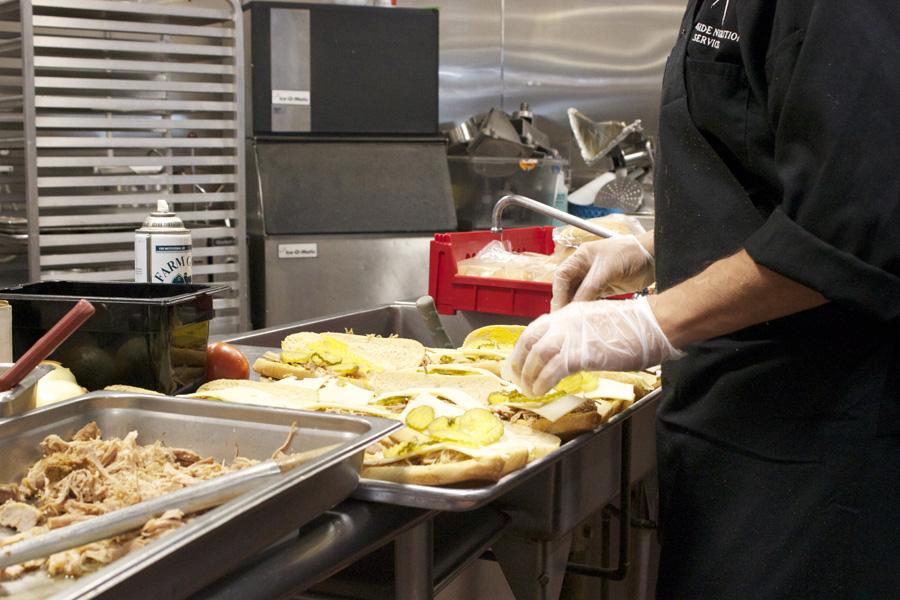How School Lunch is Made
They move at pace, ten maybe twenty. One works on frosting in the corner, a stainless steel mixing bowl sits as he adds various ingredients. To his right, a woman piles different cheeses atop flat freshly breaded chicken. Across from her another man adds pickles to slightly toasted bread. This bustling scene is only a corner of Westside High School’s kitchen cafeteria, the rest is filled with staff hard at work performing similar tasks in order to get ready for the day’s lunches.
However, the hard work in putting together school lunches doesn’t begin the day of. It starts a week prior when Westside High School’s Culinary Manager Sharon Schaefer and assistant Culinary Manager Kevin Fischer get together to plan the menu. They start by looking at the elementary menu and base certain dishes off of it.
“For example, there is a meatball sub, and we say hey, high schoolers would like a meatball sub, but let’s put it on toasted garlic bread and make a homemade marinara sauce,” Schaefer said.
From here Schaefer and Fischer begin to build the rest of the menu around the federal form. The form requires schools to serve foods from several different food groups including meat/meat alternate, vegetable (dark green vegetables, red/orange vegetables, beans and peas), grains, fruits and milk. Each meal served in the cafeteria must meet a minimum and a maximum of these groups to comply with federal standards.
In addition to federal standards, the customers’ wants and need are also taken into account.
“It needs to be comfortable for the kids,” Fischer said. “We want them to be happy.”
While happiness and good food aren’t the first things that come to mind when you think of school food, Schaefer and Fischer want that to change. They began this processes by making all food from scratch and preparing only fresh options for the students.
“We make our own sauces for everything across the board,” Fischer said. “We make the marinara, and bring in fresh herbs and ginger.”
“Everything except our breaded meats are made from scratch,” Schaefer said. “We tried to make them on our own, but with 300 servings it was too hard to keep up, but the ones we buy taste just as good as if we made them”
Sacrificing taste is not an option for the pair. Both were trained in fine dining, along with the rest of the kitchen staff. They were all taught to cook in a way that produces fresh and delicious food for the customer.
“For us, we don’t make school food,” Fischer said. “We take resturant recipes and pair them down to meet the guidelines. We want to make good food, food that people will enjoy.”
Your donation will support the student journalists of Omaha Westside High School. Your contribution will allow us to purchase equipment and cover our annual website hosting costs.












